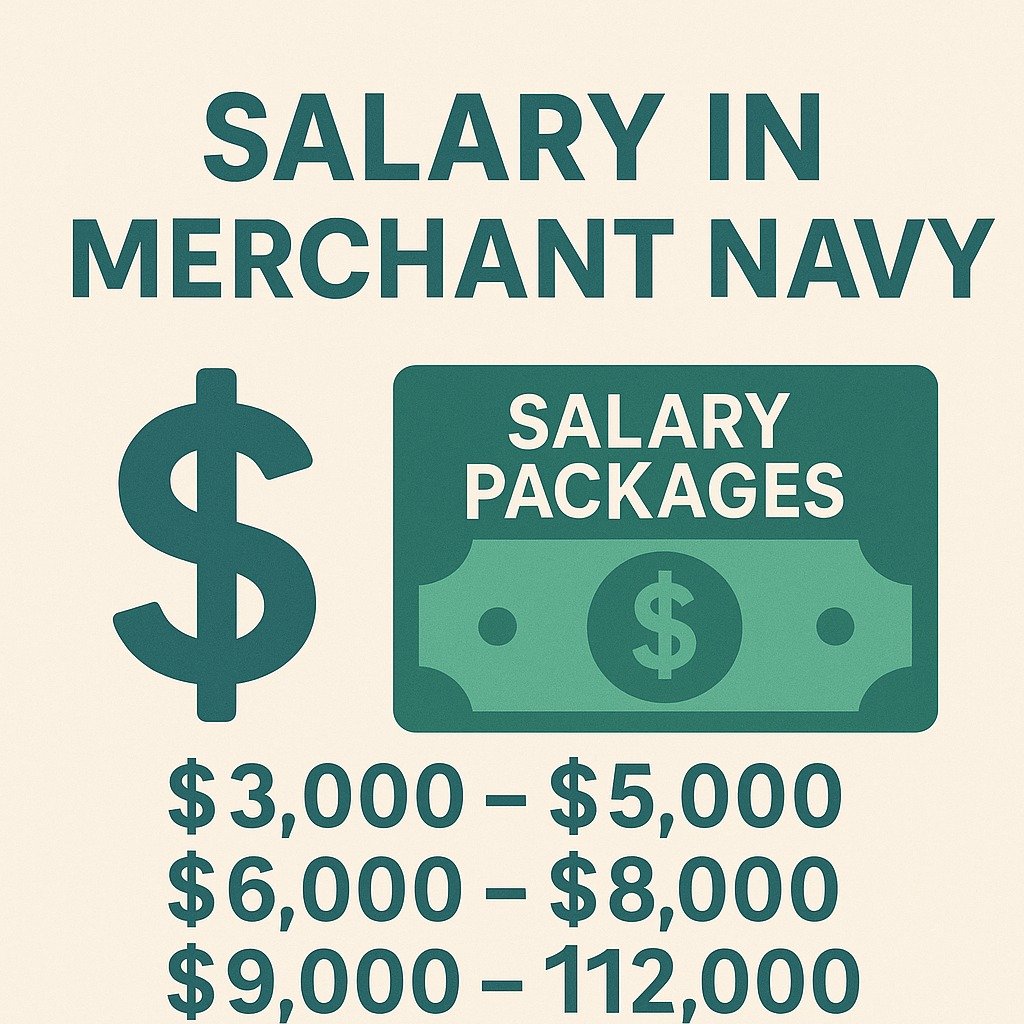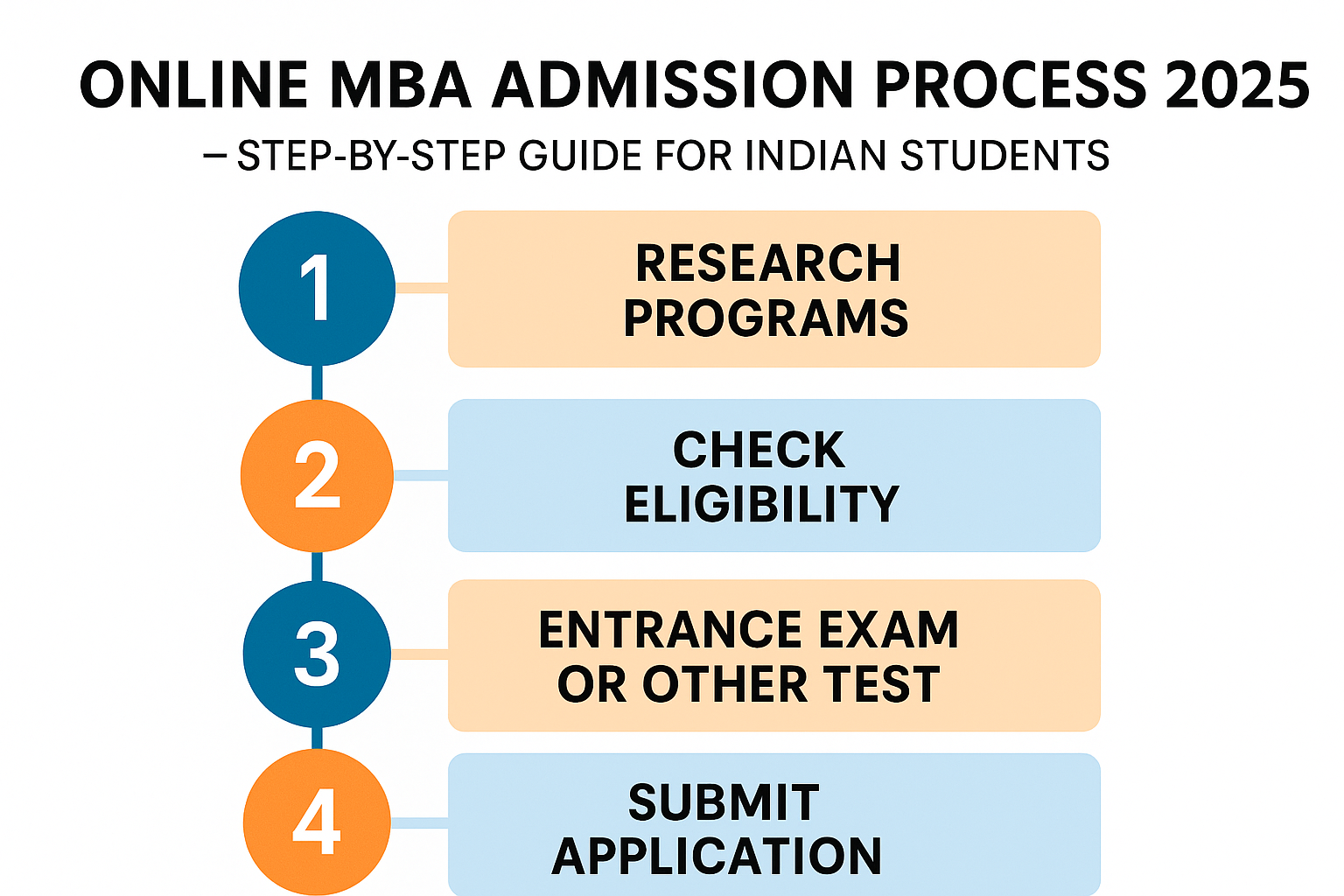Explore Over 100+ Online Universities












































#AapkiSuccessHamariPriority
Merchant Navy Salaries 2025: Pay Scales, Benefits and Why It’s Worth It
If you’ve ever dreamed of a career where you can travel the world, work on massive ships, and earn a pretty solid paycheck, then the merchant navy might just be calling your name. But let’s be honest—before signing up for a life at sea, most people have one burning question: How much does the merchant navy actually pay?
Well, you’re in the right place. This blog breaks down merchant navy salaries, what influences them, how much you can expect to earn at each rank, and why it’s not just about the money (although the money is pretty good).
Let’s dive in.

📌 What is the Merchant Navy, Anyway?
The merchant navy refers to the commercial fleet of ships that transport cargo and passengers across the world’s oceans. Unlike the Indian Navy, which is military, the merchant navy is all about trade and commerce. Think oil tankers, bulk carriers, container ships, cruise liners, and offshore vessels.
It’s an international career that can take you around the globe. But life at sea also comes with its own set of challenges—and rewards.
💰 So, How Much Do You Earn in the Merchant Navy?
Salaries in the merchant navy are impressive, especially when compared to land-based jobs. Plus, they’re often tax-free for Indian citizens working on foreign vessels, provided you meet the NRI (Non-Resident Indian) criteria (i.e., being out of India for 183+ days in a financial year). That said, your salary depends on a few things:
- Your rank
- Type of ship
- Experience
- Company/flag of the ship
- Duration of contract
Let’s break it down.
Entry-Level Salaries in the Merchant Navy
1. Deck Cadet/Trainee Marine Engineer
This is the starting point for most merchant navy officers. As a cadet or trainee, you’re onboard to learn and gain sea time.
Salary Range: ₹25,000 to ₹80,000 per month
Factors Influencing Pay: Training company, ship type, nationality of ship
While the pay isn’t sky-high at this stage, your food and accommodation are completely taken care of. Plus, this is just the beginning.
🚢 Salaries for Officer Ranks
2. Third Officer/Fourth Engineer
After getting your Certificate of Competency (CoC), you’re promoted to a junior officer rank.
Salary Range: ₹1.5 lakh to ₹3 lakh per month
Third Officers handle navigation, safety equipment, and port communication. Fourth Engineers manage machinery and systems like generators, sewage treatment, and pumps.
3. Second Officer / Third Engineer
A year or two of experience can take you to this level.
Salary Range: ₹2.5 lakh to ₹4 lakh per month
Second Officers are responsible for chart work and passage planning, while Third Engineers oversee boilers, fuel systems, and water systems.
4. Chief Officer/ Second Engineer
Now we’re talking serious responsibility—and serious pay.
Salary Range: ₹4.5 lakh to ₹6.5 lakh per month
These are senior-most officers on board after the Captain and Chief Engineer. They supervise cargo operations, maintenance schedules, and the team of juniors.
👑 Top of the Ladder: Captain & Chief Engineer
5. Captain (Master) / Chief Engineer
This is where the big money comes in.
Salary Range: ₹6 lakh to ₹10+ lakh per month
Captains are responsible for the entire vessel, its cargo, and crew. Chief Engineers are in charge of all machinery and engineering staff.
Their salaries vary depending on the ship’s size and company. LNG carriers and offshore vessels usually offer the highest pay.
🔄 What About Contract Lengths?
Unlike land jobs, merchant navy officers work in shifts or contracts—you go on board for a few months and then have time off.
Typical contracts look like:
- Cadets: 6–12 months
- Junior Officers: 6 months on, 3 months off
- Senior Officers: 3–4 months on, 2–3 months off
- Company/flag of the ship
- Duration of contract
So while you may earn, say, ₹6 lakh a month as a Chief Officer, it’s for 4 months at sea—meaning ₹24 lakh for the year with time off in between. Not bad, right?
🌎 Type of Ship Matters (A Lot)
The kind of ship you sail on can seriously impact your salary.
Here’s a rough comparison of pay scales across ship types:
Ship Type | Average Monthly Pay (Captain) |
Oil Tanker | ₹8–10 lakh |
LNG/LPG Carrier | ₹9–12 lakh |
Container Ship | ₹6–9 lakh |
Bulk Carrier | ₹5–7 lakh |
Cruise Ship (Indian) | ₹3–6 lakh |
Why the difference? Specialized ships like LNG carriers require more expertise and come with higher risk, which translates to higher pay.
🇮🇳 Indian vs Foreign Shipping Companies
You’ll find both Indian and international companies hiring Indian seafarers. Here’s how they stack up:
🔹 Indian Companies (like SCI, Great Eastern):
Offer steady employment
Slightly lower salaries
Easier for beginners to get into
🔹 Foreign Companies (like Maersk, NYK, MOL):
Higher pay (up to 20–30% more
More competitive
Better chances for faster promotions
🧾 Tax Benefits (Yes, They Exist)
One of the biggest perks of merchant navy salaries is that they’re tax-free—if you spend the required number of days outside India (183 days or more in a financial year). This makes the effective income even more attractive. But make sure you keep your passport stamps and sea service records updated for proof during tax filing.
🧑🏫 How to Join the Merchant Navy (Briefly)
Not everyone can just walk onto a ship and start earning lakhs. You’ll need proper qualifications and certifications. Here’s a quick breakdown:
For Deck Officers:
- Join DNS (Diploma in Nautical Science) or BSc Nautical Science
- Complete pre-sea training
- Get onboard training as a Deck Cadet
For Engine Department:
- Join Marine Engineering (B.E/B.Tech)
- Complete STCW courses
- Start as a Trainee Marine Engineer
Once you complete your training and exams, you climb the ladder with experience and certifications.
📈 Career Progression = Higher Pay
The great thing about this career? Your pay keeps rising with rank. If you start young, say at 20, you could be a Captain or Chief Engineer by your early 30s, making eight-figure annual income. and unlike some careers, promotions in the merchant navy are merit-based. Pass the exams, clear the assessments, and you’re good to go.
🧳 Perks Beyond Salary
Let’s not forget the non-monetary benefits of being a seafarer:
- Travel the world for free
- Minimal living expenses on board
- Tax-free salary (in most cases)
- Early retirement option with savings
- Paid vacations between contracts
- Strong work-life balance (on a macro level)
🧠 Final Thoughts: Is It Worth It?
If you’re someone who doesn’t mind being away from home for a few months, loves the sea, and is looking for a high-paying, dynamic career, the merchant navy is a fantastic option. The salaries are strong, the growth is real, and the lifestyle is unlike any other. But it’s not just about the money—it’s about building a career that’s global, adventurous, and rewarding on multiple levels. So, whether you’re just curious or seriously considering joining, one thing’s for sure: the merchant navy pays well, and if you’re up for the challenge, it can pay off in more ways than one.
 Frequently Asked Questions (FAQs)
Frequently Asked Questions (FAQs)
The starting salary in the merchant navy for cadets or trainee engineers ranges from ₹25,000 to ₹80,000 per month, depending on the company, ship type, and training program. This includes free food and accommodation on board.
Yes, merchant navy salaries are generally tax-free for Indian seafarers if they qualify as Non-Resident Indians (NRI) by spending 183 days or more outside India in a financial year. Proper documentation is required to prove this.
Captains in the merchant navy typically earn between ₹6 lakh to ₹10+ lakh per month, depending on the ship type, company, and experience. LNG carriers and offshore vessels often offer the highest pay scales.
LNG and LPG carriers usually offer the highest salaries due to the complexity and risk involved in transporting liquefied gases. Offshore vessels and oil tankers also pay significantly more compared to container ships or bulk carriers.
No, foreign shipping companies usually pay 20–30% higher than Indian companies for the same ranks. However, Indian companies may offer more job security and are easier to join for fresh graduates.
In most cases, merchant navy officers are paid only during their time onboard. However, the salaries are high enough to cover time off. Senior officers often take contracts of 3–4 months followed by 2–3 months of paid or unpaid leave.
A Fourth Engineer earns around ₹1.5 lakh to ₹3 lakh per month, while a Chief Engineer can earn ₹6 lakh to ₹10 lakh per month, depending on experience and the type of vessel.
Promotions depend on experience, exams, and performance. Generally, with consistent sea time and by clearing Certificate of Competency (CoC) exams, officers can expect a promotion every 2–3 years.
It can be competitive, especially for freshers. However, with good academic records, proper training from DG-approved institutes, and networking, most cadets and trainees find placement within a year of completing their course.
Yes, many ex-seafarers transition to port management, shipping companies, maritime law, marine insurance, or teaching roles after sailing. Experience at sea opens multiple career paths on land.















